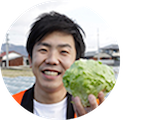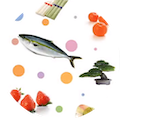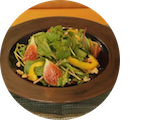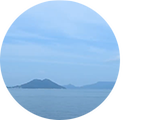
Speaking of the winter scenery of Sanuki, it is usually not a snow scene but a warm day. In the pond wrapped in the soft light of winter, birds gather lively. Smiles gather around duck hot pots, sushi hot pots, lettuce hot pots, oyster hot pots, blowfish hot pots, hamachi shabu-shabu, Sanuki beef shabu-shabu, and pots full of Sanuki feasts. At the beginning of the year, there are many first-time visitors, including the god of the sea, Kotohiragu Shrine, Kobo Daishi's birthplace, Sohonzan Zentsuji Temple, Yodaji Temple for evil, and Yakuri-ji Temple, a thriving business district. . Therefore, this time, we will visit the climax of Shikoku Sacred Ground, which is also recommended for Hatsumode, the 87th temple "Nagaoji", and the 88th "Yukunoji" temple.
Nagao area where pilgrims come and go
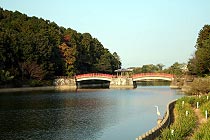
Sanuki City, located in the eastern part of Kagawa Prefecture, was formed in 2002 by the merger of five towns: Tsuda, Okawa, Shido, Samukawa, and Nagao. This time we will visit the former Nagao town area. There are Choo-ji Temple and Okubo-ji Temple, and it is an area where many pilgrims can be seen. First of all, just a short walk from the train station "Nagao Station", we will start our journey from Nagao-ji Temple, No. 5 Shikoku Sacred Ground.
New after 118 years
It is said that Kanon-in Temple "Ch 尾 oji" began in 1268, when Tenpyo 11 (7) was long ago, when the monk Gy 基 ki carved a sacred Kannon (shokannon) with a roadside willow tree. It is reported that Kobo Daishi visited and performed a goma prayer. The main hall, wrapped in pine greenery, is under construction until December. On the New Year's Day, the tatami mats have undergone a major renovation for the first time in 39 years, welcoming a refreshing new year. The roof tiles were also replaced, but the demon tile with the Aoi crest that was given by the Sanuki feudal lord Matsudaira said that it was written as Genroku 12 (118). This has been carefully reworked and put back on the roof.
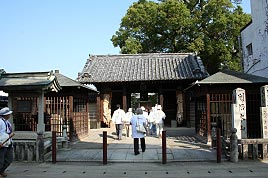
By the way, Speaking of "Nagaoji", there is a famous New Year event. "Shamisen Mochitsuki" is held on New Year's Day 2. According to the sound of the shamisen, use three punches to make up about 3 stone cakes per stone. This makes a giant kagami mochi, which will be used for the "Yamagami Power Mochi Carrying Competition" held on January 1. It seems that the three treasures and the kagami mochi are 7 kilograms in total, and they will compete for how many steps they have taken. Children's competitions are also held with small kagami mochi, and the grounds are gently excited. January 150 is the day of the Shingon sect New Year's event, "Kaiyo". There is also a drop of fukumochi, and a koto concert is scheduled for 1.
Chooji Temple Feast
In front of the temple of Choo-ji Temple, in front of the Nio-mon Gate where the large straw is lowered, there is a "Kyoudo" that was built during the Kamakura period. It is often overlooked, but it is a valuable thing designated as a national important cultural property. When you enter the precincts, you will find a large tree of camphor trees just looking up, and spread the shade of green trees in winter.
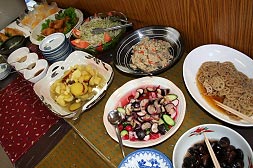
While watching the thick trunk, the time of peace and time passes "Shizuka dining room". In the past, Zenzai, Amazake, Udon, and specially made Amanatto-based rice balls were popular as a resting place, Shizu. This menu is inherited as it is, and the cafeteria just opened in August 2007 can enjoy lunch buffet. When you think of a buffet, you can imagine Western food, but what you will see here is a Japanese food that uses the local ingredients that are safe and secure to take care of your body. There were plenty of fresh vegetables, and there were fried chicken, inari sushi, and dessert plates on this day. As much as you like, you can take such a large plate of dishes, with miso soup and rice, for only 8 yen. You can put it in a pack and take it home.
In addition, "Nagaoji Honbo Zensho" is held at Choo-ji Temple from March to the beginning of June, and from September to the beginning of December. You can enjoy. It is a dish made mainly of seasonal vegetables named "saikaiseki", and there is also pleasure of matcha after meals.
Legend of Shizugozen
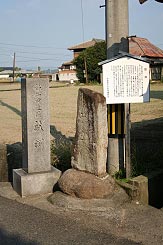
The name "Shizuka" in the cafeteria comes from Shizugo-mae. The footprint of Shizugo-mae, who received the grace of Yoshitsune Genji, has been left in many places, but there are also various historical sites here on Sanukiji. First of all, there is a "shaved mound" in front of Shizumoji Temple in the temple grounds, where it is reported that Shizu and his mother, Iso Zen Zenshi, came home. Here, Shizukamae got her hair down and became a nun called Yojin. She knotted hermitage nearby and lived with her mother, leaving her tiles behind.
If you walk west from Chooji Temple, you will find Kobuchi. Until the early Showa era, it was reported that Shizugo-mae, who gained at Nagao-ji Temple, threw a drum of the witness given by Yoshitsune in the area where Shimizu was exposed. The drum was a heian treasure of the Heike that was a famous instrument with excellent sound quality, with a Chinese rosewood body, gold and silver inlaid skin of a calico fox. It is said that Saburo of Ise picked up a drum floating in the waves at the time of the Yashima battle and offered it to Yoshitsune.
It is said that Iso Zen Master was born in Koiso no Hama in Higashi Kagawa City. The tomb is located along Nagao Kaido, a 7-minute walk from Kotoden Nagao Station, and is said to have encircled a Zen priest on the way back from Nagao-ji Temple. In addition, there is a grave in front of Mizuki-cho.
Raise the town with bamboo "Banjoy School"
Sanuki City has a mysterious school called "Banjoy School". "Banjoy" is a coined word that combines "Bamboo", the English word for bamboo, and "enjoy" to enjoy. In other words, it is a cram school where you can enjoy making various things with bamboo.
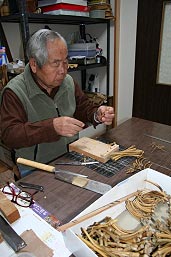
In the past, bamboo crafts were prosperous as a local industry in Nagao, and many bamboo products were shipped in the 50s. However, in the times, bamboo products in Sanuki City are destined to disappear. At that time, a community-led villagers' movement started, and as part of that, we launched a bamboo school in 1985 to revive the "Takenomachi Nagao". People who were interested in bamboo gathered, refined their bamboo work skills, and aimed to be a leader. However, there is a time of graduation from school. So, we collected OBs of graduates and started "Banjoy School" in 220. At present, there are XNUMX people and members outside the prefecture. There is no membership fee and no tuition fee, as long as it is important. In the former forestry association building next to the Nagao Community Center, three New Year's parties gather every Sunday except the sun to make bamboo products. Kawachi is the only master in the forest who has been selected by bamboo craft in the prefecture. Business cards are also made of bamboo crabs and Suzumushi, which are also lifelike, making monsters and bird masterpieces. Some of the members' products are also available at Nagao Roadside Station.
With local sticky rice
Tamaki Asaido, located about 150 meters west of the intersection in front of Zukita Station, is a safe and secure rice cake and confectionery shop using local sticky rice. The founder, Kikuo Tamaki, trained in Tottori and other places, and was founded here in 31. Mr. Tamaki, a first-class Japanese confectionery technician, is a skilled Japanese confectioner who holds a license for a vocational training instructor. Currently, with the help of four family members and neighbors, we manufacture and sell Japanese sweets and red rice.
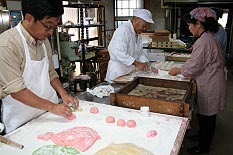
The red rice and yomogi mochi here are special dishes made with local rice cake. "If you eat here, you can't eat anything else," has been praised by neighbors. The texture of glutinous rice is soft and gentle. The wormwood is also hand-picked in the season and preserved frozen to deliver the scent of spring all year round. Momogi mochi and red rice, which only go to the event in the town and are only kept at stores, often sell out. The celebrations and New Year's rice cake (mochi) have a reputation for their reputation, and orders are being placed one after another for the hearty handmade taste. In addition, confectionery named "Furusato" won the Gold Award at the 19th National Confectionery Exposition. It is a candy created to convey the warmth and nostalgia of home. The wife, Mitsuko's smile is also a warm Tamaki Asaido.
Warm knit gloves in winter
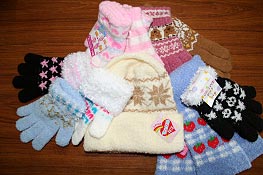
Take Tamaki Asahi-do on Prefectural Road No. 3 (Shido Yamakawa Line) and head around Chooji Temple again. Sato Knit Co., Ltd. is located east of Prefectural Road. This is a "glove" company that is rare in Nagao, founded in 40. It also sends out knit products woven with yarn as the company name suggests. Mr. Sato's products make up about 3% of domestic production, about 100 million pairs in one winter. "The consumption is sluggish due to the declining birthrate and global warming, and the rising oil prices are difficult," said founder Yoshinori Sato. At present, the second-generation son also runs the business with about 2 employees. 20% of the process is mechanized. However, the last is manually. Mr. Sato was clean and tidy up the pile of accumulated products.
The trendy product taught by Mr. Sato, who has a reputation for planning proposals, is a fluffy marshmallow touch. It's so good that you'll be enchanted by the touch, and you'll be healed just by touching it. Gloves, hats, mufflers, and neck warmers wrapped around the neck, like this marshmallow, are being created one after another. These products are sold at mass retailers through wholesalers nationwide. For example, knitted gloves are as easy as 680 to 1000 yen, and they are fluffy, gentle, and create a warm winter.
Exquisite "Strawberry Daifuku"
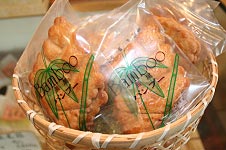
Next, we will visit Tsuruya, a sweets shop along the Nagao Kaido (Prefectural Road No. 10). Tsuruya, founded in 4, and now the fourth generation, Tomoya Fukusaki, produces a variety of delicious and beautiful sweets from Japanese sweets to Western sweets. Locally-known confections are also popular, and “Bamboo Cookie”, named after the bamboo town Nagao, is certified as a special product of Sanuki City. In addition, “Wasanbon Roll with Black Beans” and “Baumkuchen with Wasanbon Sugar” kneaded with local Wasanbon sugar into the dough are also sweets with a classy sweetness and taste.
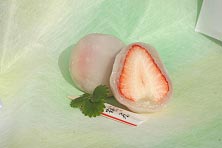
One of the best pushes in this season is "Strawberry Daifuku", which is made using fresh Nagao strawberries. This is a self-confidence for a limited time (around December to May), when fans want to eat it from afar. Start making it early in the morning, when it's still dawn, and sell it out as soon as you put it out at 12 o'clock in the morning. In particular, "Jumbo Ichigo Daifuku" has a limited number, so reservations are recommended. Spring grape Daifuku, bean Daifuku throughout the year, and matcha cream Daifuku are also unforgettable. It is Daifuku of Tsuruya who wants you to taste it once.
One of the three great Japanese fish sauces
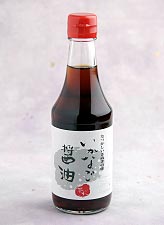
Kikusui, a Japanese restaurant, is located southwest of Tsuruya along the Kamobe River. Founded in 63, it is a restaurant that cherishes Japanese food culture and boasts dishes that make use of Seto fish. A seasonal garden reminiscent of a pristine wilderness in a traditional sukiya-style building, and delicious food can be enjoyed with your tongue and your time will relax. Also, during the New Year's Day, Zenzai, which is made from charcoal-grilled herbs with yuzu set and red and white mochi, is also popular. In February, Yuba and Tofu Kaiseki will also appear. And here is "Saryo Crescent Moon and Rabbit" where you can easily enjoy the taste of Kikusui, and you can enjoy lunch like a coffee shop. In addition, there are also nice accessories on display and for sale, so it is recommended to admire while tasting coffee.
Here, we sell "Ikago soy sauce", one of the three great Japanese fish sauces. "Ikago soy sauce" is an old-fashioned soy sauce fermented with fresh "Ikago" and "natural salt" in Setouchi. Kikusui's special “Ikanago Soy Sauce” was completed by adding its own recipe to that traditional recipe. It is also recommended for soy sauce with tofu or sashimi, and the Seto Kokinabe hot pot made with soup is very popular. Not only is it stored in stores, but also natural seasonings, which are ordered from all over the country via mail order, "Nakago soy sauce", which is tightly packed with fish nutrition and flavor.
Mainly on Sanuki's ingredients, such as "Ikago soy sauce", the flavors of nature are utilized, and of course, there are no additives, no coloring, and a variety of flavors handmade by craftsmen.
A park where you can live long
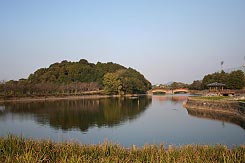
From Kikusui, there is "Kamezuru Park" about 5 minutes by car. This park is written "Kamezuru" and called "Kikuku". This is a vast prefectural park where the scenery of greenery and ponds can be relaxed. There is a "Tsurugayama" that resembles a crane flying to the west, and Kameshima is floating in the east of Miyaike. It is said to be one of the famous cherry blossom spots in the praise of the East, and is also known as the “Hana Shobu no Sato”, where 15 Shobu flowers bloom in season. To the south of the park is the Nagao Sports Park, which has tennis courts, multipurpose plazas, and outdoor stages on a hill with a good view. Next to it is Twin Pal Nagao, which has a heated pool, hot springs and a training room, and is visited by many families. In addition to "Tsurunoyu" and "Kamenoyu", we recommend a hot spring with a steam sauna, infrared sauna, and open-air bath. There is also a free skate park where you can practice skateboarding, BMX and inline skating.
Beside the park is Nagao's guardian deity, Usa Shrine. Crane is a symbol of longevity, saying, "Crane is a thousand years, turtle is a million years." It is also a recommended spot for shrine visits in pray for healthy longevity.
Pilgrimage exchange base
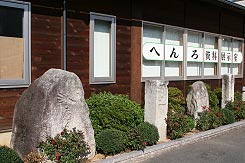
On the west side of Kazuru Park, take Route 3 (Shide Yamakawa Line) to Okubo-ji Temple. On the way, there is Maeyama Dam, along the roadside station Nagao and Ohenro Exchange Salon.
The "Oenro Exchange Salon" is a facility where you can easily visit the pilgrimage. There are also tea entertainment and sometimes exchanges with local people, and it is also a place for exchanging information between pilgrims. Mr. Kimura, the pilgrim master, awaits the salon, which is the perfect place to take a lecture before heading to Shikoku pilgrimage.
In addition, there is a "Henro Material Exhibition Room" where valuable pilgrimage materials from all over the country are displayed. There are exhibits related to bills, bills, and Kobo Daishi during the Edo period, and you can feel the depth of the pilgrimage culture. Be sure to take a look at the signposts in front of the museum.
There are also bamboo products and fresh vegetables
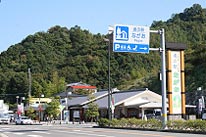
Roadside station “Nagao” is located diagonally across the road from “Oenro Exchange Salon”. Inside the museum, there is a break corner, an information corner where you can get information on nearby sightseeing and roads, and a corner where special products such as bamboo products are placed. In addition, `` Henroji Morning Market '' with fresh local agricultural products is held, for example, in winter, seasonal vegetables, fruits, wild vegetables, etc. such as broccoli and yam, kiwi and oranges, radishes and turnips etc. to line up. The shop also has a wide selection of sweets, and you may encounter handmade snacks.
Phantom Sanuki brand (brand) pork
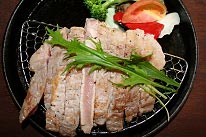
Right next to the roadside station is the popular restaurant Hoshigoe no Sato. This is a shop where you can taste Sanuki's signature brand pork. It is a directly managed store of the agricultural union corporation "Yuzuriha" that grows Sanuki brand pigs, and lets you eat the best pork dishes. By the way, Kagawa prefecture has a brand meat called "Sanuki Sanyu". "Sanuki beef" has a rich taste, "Sanuki cochin" is elegant and mellow, and "Sanuki dream pork" is described as "rich and delicious pork." This "Sanuki Yume Pork" was born by crossing with black meat (Berkshire breed) of good meat quality. Pork that can make you scream. In addition, you can also taste "Sanuki Kurobuta", which has an unusual flavor. This is also pork born with great attention and is called a rare and highly valued pork. These brands of pork are just juicy, have a sweet taste that they don't hate in their fats, and are so tasty that many customers only have a place to eat pork. Pork steaks are impressive as well as classic menus such as hamburgers and pork cutlets. Also, if you make a reservation, you can taste black pork shabu-shabu with fresh vegetables. In addition, there are products that can be taken home, such as hamburgers and sausages, and are also pleased with gifts. Here, it is a ranch-managed restaurant where many people have awakened to the taste of pork.
Finally the temple of wishes
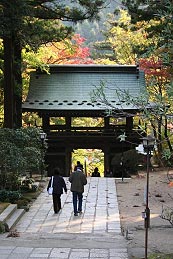
Departing from Hoshigoe no Sato, you will be waiting for the 88th Kichigan Temple, Okubo-ji Temple, in Shikoku. On the pilgrimage road, there is a Hosokawa Family Residence (national important cultural property) where you can see the farmhouses in the middle of the Edo era, a signpost from the Edo era, and a signpost indicating the current distance to Wakimachi in Mima City. . In addition, there is Takeyashiki, also known as a pilgrim's inn, where you can taste the comfort of Yumoto Yakushiyu Onsen, especially in the winter, and enjoy dashi and duck.
Following the footsteps of many pilgrims, we arrive at the 88th bill, Daiku-ji Temple.
"Okubo-ji" began when Gyoki built a hall during the Nara Era (717-723). After that, it was reported that Kobo Daishi trained in the rock cave of the current Okunoin, the temple of Hezogamine, and carved the Yakushi Nyorai to become the main priest. At that time, he was named "Okubo-ji". Okubo-ji Temple is located in the middle of Mt. Yazu, 787m above sea level, so you can see snow scenery in winter. Hatsumode worshipers also come in and out of the prefecture. This area is also known as "Ladies Takano" and is known for allowing women to enter the mountain early on. In the precincts, the “Hojodo” is filled with kongozue and shades that have been safely visited around 88 plaques, and you can feel the excitement of the temple of Yugan.
The blessings of Sanuki's mountain
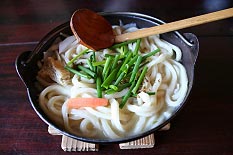
The pilgrim who has finished visiting 88 temples safely stops at a souvenir shop in front of the gate. There are also delicious udon and soba. One of them, Yasuhachi-an, is known as a famous Udon Udon noodle shop. Sanuki udon is now famous for its “Bukkake” and “Shoyu udon”, but “Uchikuri Udon” is a place where you can enjoy the taste of Sanuki's unique hometown. The miso soup stock contains plenty of familiar ingredients such as radish, carrots, taro, fried pork, green onions, and it has an exquisite taste along with chewy udon. "Uchikomi Udon" warms your mind and body in winter. In addition, the udon wheat uses the original Kagawa prefecture variety Sanuki no Yume 2000, so you can truly enjoy the taste of Sanuki.
Here, since it is kneaded and made with dashi in the remnants of the mountain behind Okubo-ji Temple, it is a small "danzou udon", and in Kagawa prefecture many people eat it over the year. Udon and soba are both popular. Also, if you make a reservation only during the winter season, you can also taste "botan pot", and you can also taste wild vegetable dishes, konjac, and bamboo rice cake "Yahachihaan" with an unforgettable taste.
















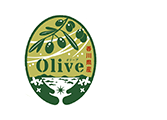 Olive products from Kagawa Prefecture
Olive products from Kagawa Prefecture

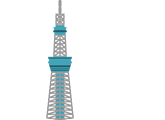

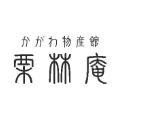
 Stores handling olive-related products
Stores handling olive-related products
